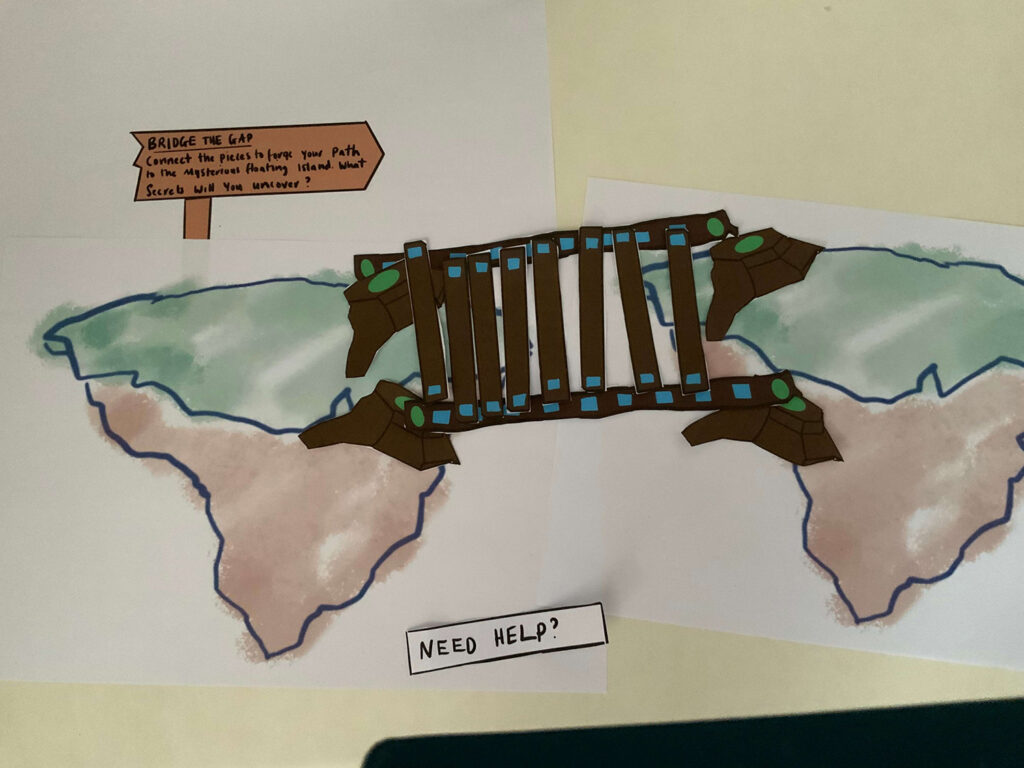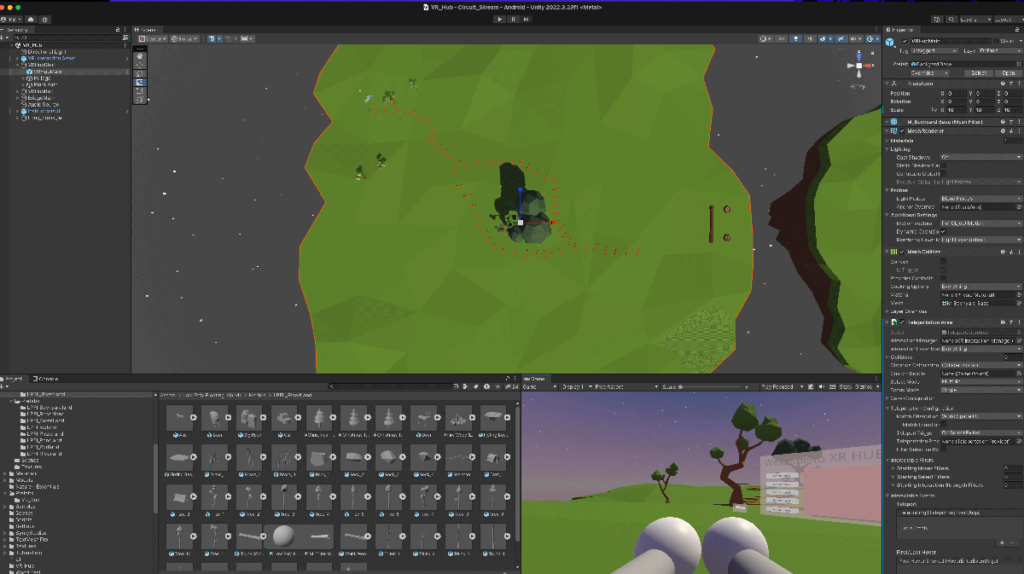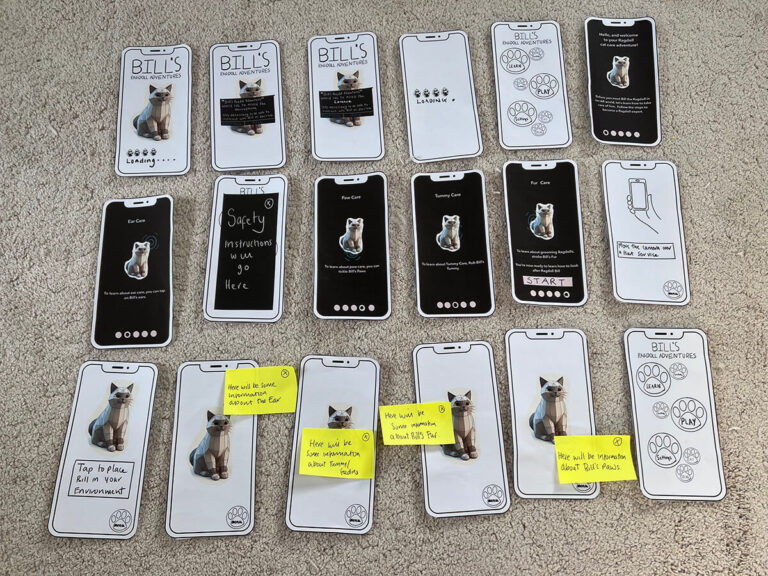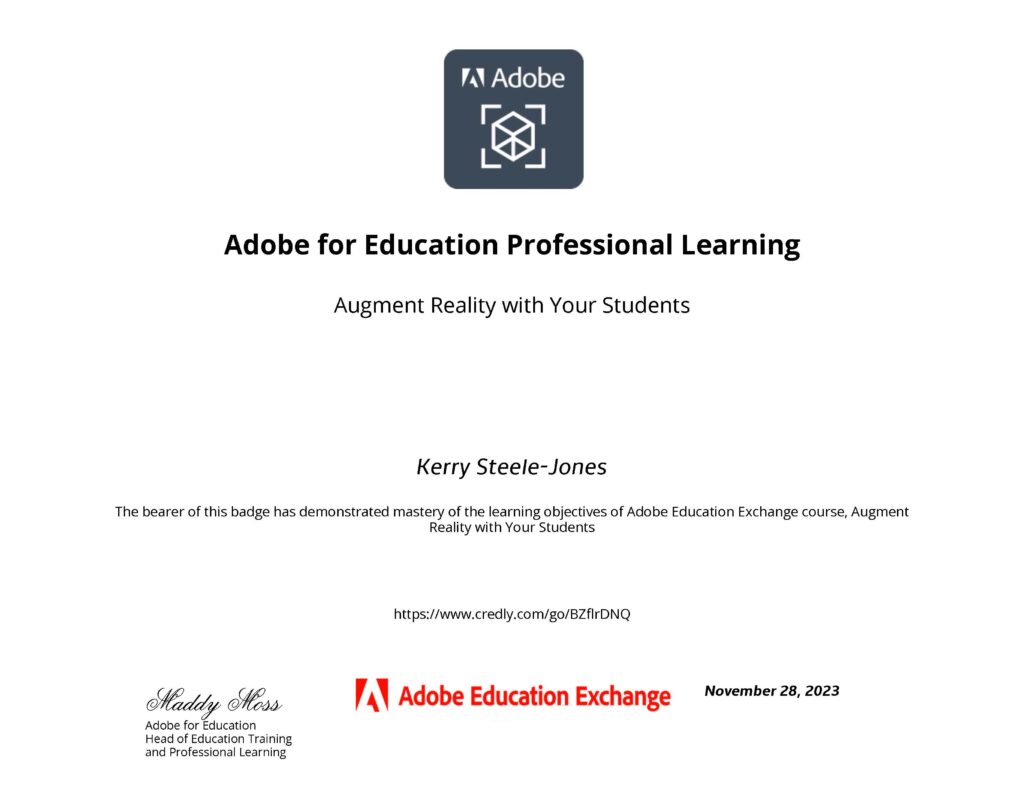The primary objective of this assignment is to give you the opportunity to design and prototype a VR application that reflects your unique vision and incorporates the principles of human-centered design, interactivity, and immersive user experience. By playtesting your rapid prototype, you'll gain valuable user feedback to refine and enhance the VR application further.
Presenting My Progress: A Showcase of What I've Learned
Reflecting on the journey through the XR Exploration Hub project over the past five assignments, it’s evident that each step has honed my skills and understanding of VR prototyping. While I’ve explored Unity and delved into the intricacies of building a VR Prototype, the culmination of these efforts is yet to materialise as a complete prototype of my ‘XR VR Hub’ scene.
Throughout the course, I’ve studied the human-centered design principles, XR Toolkit and Unity’s UI kit, aiming to grasp their functionalities and leverage them effectively in my project. Now, in this sixth week, the focus shifts towards assembling a prototype that encapsulates the essence of my vision.
This week I have started to put together a prototype in Unity. I have also employed quick iteration methods to refine the UI and bridge-building task, ensuring they are intuitive and user-friendly [before building in Untiy]. This basic prototype will serve as the foundation for my final project [if possible]. I intend to enhance the scene by adding more premade prefabs and a designed interface, as well as additional ‘XR Hubs’ that explore mixed reality and virtual reality.
Conceptualising my VR Application
In conceptualising my VR application, I’ve drawn upon insights from previous assignments, including the Seven Questions, Project Brief, and user research from focus groups. These foundational elements have guided the development of the XR Exploration Hub, which serves as the cornerstone of my project.
The XR Exploration Hub is designed to provide an immersive introduction to emerging technologies such as AR, VR, and MR. It aims to cater to a diverse audience, including novice technology users, students interested in XR, faculty staff, and workshop attendees new to immersive technologies.
Through workshops and audience research, I’ve gained valuable insights into my target audience’s preferences, needs, and behaviours. This understanding has led to user personas, each representing distinct user profiles with specific interests and motivations related to VR technology.
Click on the Miroboard to review the conceptualisation of the XR Hub.
Paper-based Playtesting

I devised a structured approach to gather feedback on the instruction menu and bridge-building puzzle for the paper-based playtesting session. I briefed a non-VR user on the objectives and instructed them to think aloud as they interacted with the prototypes. The session began with the participants familiarising themselves with the interface and identifying controls. They then built a bridge using the provided pieces to reach the floating island depicted in the scenario.
Testing the instructions interface
In the User Interface Testing phase, clear communication was crucial for the participant to interact with the paper prototype effectively. I meticulously explained the layout and function of the prototype, clarifying that the representations on paper symbolised an interactive interface. Additionally, I demonstrated using physical controls; the participant was instructed to use their fingers to mimic the action of clicking, allowing me to interpret their interactions and intentions with the prototype accurately. This method ensured that the participant could engage with the prototype as if it were a functional digital interface, providing valuable feedback on its usability and design.
Testing the Bridge Puzzle
The Objectives were explained to the participant, and the tools and materials available for building the bridge were detailed. Each component was colour-coded to intuitively guide the construction process, allowing participants to build the bridge autonomously without direct instruction enabling participants to assemble the structure independently. This approach aimed to reduce reliance on external help and encouraged intuitive problem-solving and decision-making during construction. Notably, the primary goal of this task was to familiarise participants with VR controls and navigation within a virtual environment, using the bridge-building activity as a practical application to enhance their understanding and proficiency in VR interaction.
The participant was equipped to build the bridge on their own, a help button was available to provide additional instructions if needed. This feature was included to ensure support was accessible, yet its non-use by the participants underscored the effectiveness of the colour-coded guidance system.
Findings
User Interface
The participant found the user interface intuitive and could follow the instructions for operating the physical controls effectively. However, their lack of experience with VR meant they were not fully aware of the implications of their actions within a virtual environment. Despite this, the key takeaway was their clear understanding of which controls to use in response to each instruction provided, demonstrating a successful interaction with the interface. When asked for suggestions for improvement, the participant noted, “I think with practice, it would get easier.” This comment underscores the hope that the designed interface and its instructions will perform effectively in a VR environment. Looking forward, it will be intriguing to see how participants adapt to the high-fidelity version of the interface when tested within a VR headset. This future testing could provide valuable insights into how initial familiarity can transition into skilled interaction in a more immersive setting.
Building a Bridge
The participant acknowledged the effectiveness of the colour-coding system, noting that they recognised how the colours indicated the interconnections necessary for constructing the bridge. This observation confirms that the colour-coded components successfully guided the assembly process, facilitating an intuitive building experience.
Implementing additional affordances in Unity will enhance the user experience further in future iterations of the exercise. Introducing audio and visual feedback would provide real-time, interactive cues that could assist participants in making correct choices during the construction phase, potentially improving engagement and learning outcomes.
Click on the Miroboard below to view prototyping resources used for the playtesting.
Back to the Unity Protoype
I selected trees, mushrooms, and shrubs from a free nature asset pack in the Unity Asset Store to create a lush and immersive natural setting. As I progress with this project, I plan to introduce an even broader range of flora, enhancing the exploratory experience for users.
Next, I focused on improving navigation within the virtual environment. I designed a wooden path that winds around the floating islands, serving as a visual guide leading users towards the bridge puzzle. This path not only enhances the scene’s aesthetics but also plays a crucial navigational role [the design of the path does need tidying up later!].
To augment the immersive experience, I incorporated a background soundscape of birds chirping. This was achieved by downloading a free nature sound asset. I imported this asset into Unity, created an audio source in the scene, and attached the birds chirping audio clip. This setup ensures that the soothing nature sounds are continuously playing, enhancing the peaceful ambience of the environment.

I then refined the user interface, testing its positioning and size within the headset. After making necessary adjustments to ensure optimal visibility and interaction, I conducted a thorough scene walkthrough. This walkthrough was crucial to verify that the wooden path was correctly configured for teleportation, ensuring seamless movement throughout the virtual space.
Although I began experimenting with the bridge construction aspect of the project, I have decided to reserve its full development for a potential final project extension.





